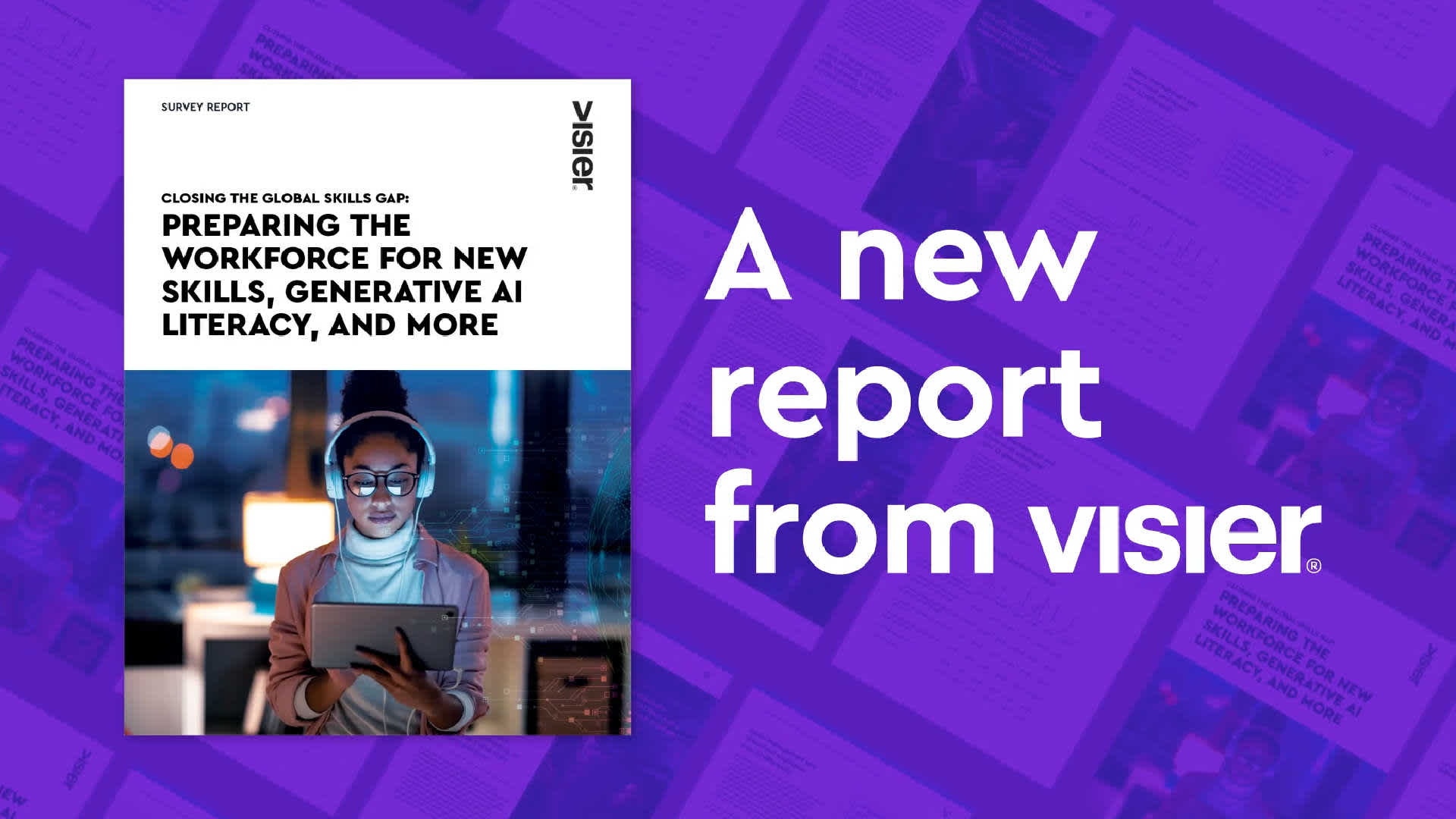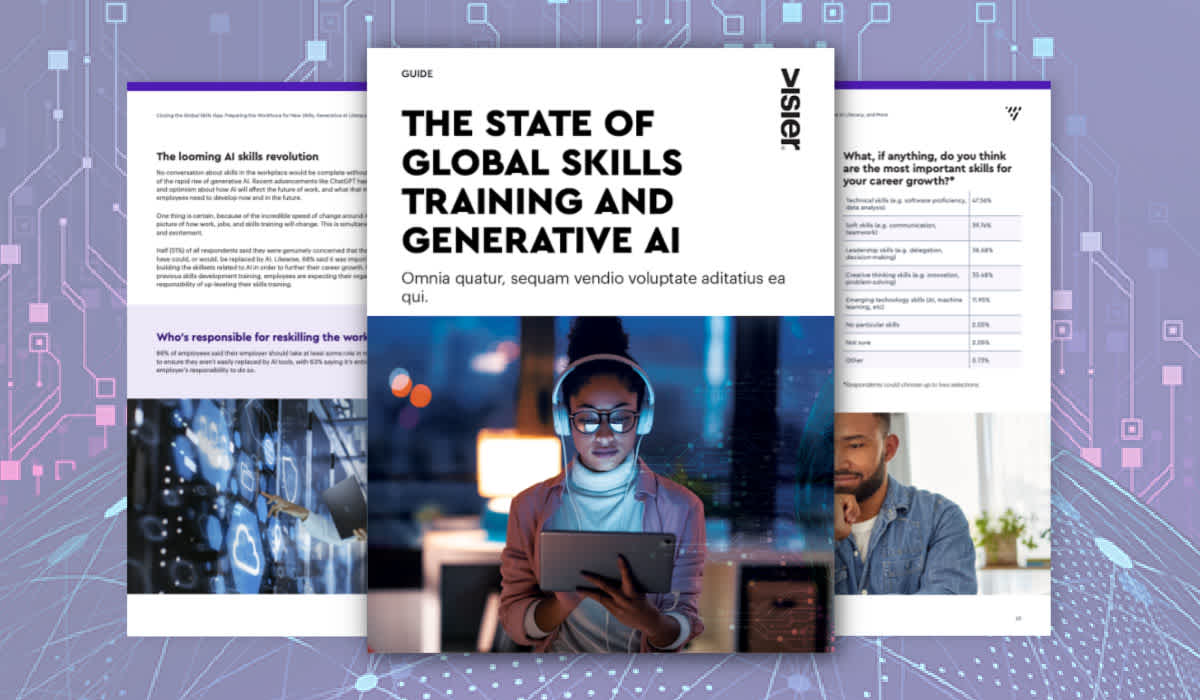What HR Leaders Need To Know About Generative AI
How will generative AI change HR? Speculations range from helpful use cases outlined here, to fears of erasure of the "human" in "human resources."

ChatGPT is the best-known of the generative AI solutions to have recently taken the world by storm. To be honest, the remarkable hype associated with generative AI probably understates its actual potential to transform how we work. It’s that big.
How will generative AI change HR? That’s a live question we’re all wrestling with. And the answers range from the helpful use cases outlined below (offered by ChatGPT itself) to the wholesale elimination of the function where everything is automated and an intelligent agent becomes the partner to the business.
In between, there are a million different scenarios that feel profoundly positive for HR and the business it serves. For too long, HR has spoken its own language and executed initiatives that were more focused on efficiency than effectiveness. Standing between HR and the business is what we call the people impact gap—a data gap, a language gap, a cultural gap, and a pace and tempo gap. Generative AI has the potential to close that gap. But, first the basics.

What is generative AI?
Explaining generative AI poses two unique challenges. First, what else can be said about a topic that has already stolen every headline and inundated every social feed in a sustained march to full media saturation? And, second, what can be said that ChatGPT can’t say itself?
To wit, an excerpt from ChatGPT’s own description of generative AI:
Generative AI refers to a branch of artificial intelligence (AI) that focuses on creating models capable of generating new content, such as images, text, music, or even video. Unlike traditional AI systems that are typically used for classification, prediction, or optimization tasks, generative AI models generate new data that resembles the training data they were exposed to.
In understanding generative AI, the most important thing to note is the last part above (highlighted in bold): Unlike traditional approaches to AI which are limited to the data they can access, generative AI actually generates net-new data by making inferences, connections, and extrapolations. In other words, it is not limited by the knowledge you feed it.
This is profoundly more disruptive than traditional approaches to AI because, for the first time, we’re witnessing a mainstream application of a machine doing one of the fundamental things that set humans apart. In its earliest commercial incarnations, generative AI is already demonstrating impressively convincing results in multiple modes of human intelligence—analytic, synthesis, interpretative, and even the heretofore solidly human domain of creative expression across virtually every form and media.
Most alarming (or exciting, if you prefer) is the speed with which it produces this output. An assignment that would normally take a relatively proficient human an hour or longer can now be completed in seconds. The results aren’t always exactly what you want, but neither are they with humans; and with some iteration and practiced prompts, you can generally produce something as good or better than you hoped.

6 ways generative AI will help HR
The implications for HR are massive and far-reaching. A few examples of the areas, according to ChatGPT:
1. Recruitment and candidate screening
HR departments can leverage generative AI to automate and enhance the recruitment process. AI models can generate realistic job descriptions, tailor recruitment advertisements, and even create virtual candidate profiles. This helps streamline the initial stages of candidate screening by generating relevant and accurate information.
2. Customized training and development
Generative AI can be used to create personalized training content for employees. AI models can generate interactive modules, simulations, and virtual environments to enhance learning experiences. This enables HR departments to provide customized training programs that address the specific needs of each employee.
3. Employee engagement and communication
Generative AI can assist in improving employee engagement by generating personalized messages, newsletters, or announcements. AI-powered chatbots can also be deployed to answer frequently asked questions, provide HR-related information, and assist employees in real-time.
4. Performance evaluation and feedback
HR departments can employ generative AI to analyze performance data and provide insights for evaluating employee performance. AI models can generate reports, identify patterns, and suggest areas of improvement. This can facilitate objective and data-informed performance evaluations.
5. Diversity and inclusion
Generative AI can help organizations promote diversity and inclusion by reducing bias in HR processes. AI algorithms may be able to detect bias and create bias-free written content for job descriptions, ensuring fair treatment throughout the HR lifecycle.
6. Employee well-being
Generative AI can contribute to employee well-being initiatives by creating personalized well-being plans, generating mental health resources, and suggesting work-life balance strategies. AI-powered chatbots can provide confidential and accessible support for employees seeking assistance.
While each of these is perfectly relevant—even compelling—use cases, they’re just scratching the surface of what will soon be possible. Had I prompted ChatGPT to dig deeper, perhaps it would have arrived at more profound conclusions hinting at, not just an improvement to existing HR practices, but a fundamental reinvention of HR roles and operating models.
Consider, for example, the positive impacts generative AI could have on the compounding labor shortage. Automation has always been part of the buy-build-borrow-bot continuum, but now the bot part feels like a real, serviceable solution instead of just hollow conference presentation fodder. And consider the role ChatGPT style interfaces could play in closing the people impact gaps I described above, leading to an actual realization of the data democratization promise where insights are made available to people leaders which, after all, is where the rubber meets the road in matters of people effectiveness.

The promise and peril of automation
As a concept, generative AI can be both exciting and terrifying. The excitement comes from the potential for radical, breakthrough improvements in productivity and the ability to unlock output and innovation at a blistering pace. The fear comes from the other side of this coin: by delegating human responsibilities to machines, where does that leave me?
For millennia, humans have looked for ways to improve productivity and quality of life by applying scientific thinking and ingenuity to how we perform tasks. From the earliest days of the industrial revolution to today’s flirting with the theoretical edges of what we thought possible, we’ve witnessed many generations of progress driven in large part by automation. In virtually every discipline, jobs were both eliminated and created with each subsequent layer of automation. And, while some workers have surely been displaced, many more have found new opportunities for growth and advancement by “moving up the stack” while automation took over lower-order functions that freed them to focus on uniquely human endeavors.
While the same logic applies in this next wave of automation, the stakes feel somehow higher and the discussions a bit more fraught with fear that careers and livelihoods will end once this innovation takes hold. As with every wave of technological advancement, I suspect most people will find ways to ride the wave, using generative AI as a tool to transform themselves and their roles—but doing so will require the willingness and courage to at least contemplate disruptive change. Because a Luddite’s resistance is never a winning formula during times of accelerating technological advancement. It’s better to be the disruptor than the disrupted.*
Imagine ChatGPT for HR data
Vee, Visier’s generative AI-based digital assistant is just one, real example of how we’ll see AI technology begin to enter the everyday workflows of HR leaders, data analysts, and, perhaps most significantly, non-analyst people leaders. Ask Vee, “What’s the trend in time to hire?” and it produces a natural language answer in perfect prose alongside associated visualizations. It also suggests drill-down questions and offers deeper insights and inferences available from the data.
By removing the obstacle of data interrogation, Vee and other generative AI tools are providing the assistance needed to truly democratize data insights to those untrained in data analysis, enabling better decision-making at every level of the organization.
Imagine the following; A sales leader asks HR for numbers on how learning and development programs are impacting sales quotas. The old way—pre-AI and pre-people analytics-—meant two-to-three weeks of waiting for an answer. Now, depending on security permissions, that same sales leader can ask Vee the same question and receive an instant answer, as well as suggestions for further questions to ask.

Compare this with how HR answers these questions today. Some questions are answerable right away, but many others require data exploration and custom dashboards that can take weeks. By the time you have an answer, the question has often changed as the priority shifts.
Perhaps more fundamentally is the fact that not everyone in HR is comfortable interpreting and drawing insights from charts, graphs, and other visualizations. In this model, as long as you can form a natural language question, Vee can deliver a straightforward answer you can understand and use. This bridges the data access and literacy gaps that hold many HR functions back.
Is generative AI secure enough to use with HR data?
Workforce data is among the most sensitive of all classes of data a company has a responsibility to protect. That’s why security and privacy should always be the first question to ask when considering the use of generative AI in this way. Visier has the industry’s most robust security model, which ensures the results returned by Vee are only to authorized end users based on their assigned security profile and associated permissions. This means that Vee’s answers from one person to another, while both accurate, will be different.
Like any disruption of this scale and magnitude, ignoring the reality is simply not an option. Generative AI is here whether we like it or not. As my colleague Paul Rubinstein, Visier’s chief people officer likes to say, “Be the hammer, not the anvil.” Those with the courage and curiosity to lean into this area of innovation will likely find transformational benefits. Those who choose to ignore it will likely find themselves vulnerable to a systemic shift that will profoundly change how we work.
It’s easy to dismiss these sorts of pronouncements as hyperbole, but I believe we’ll look back on the early days of generative AI like the dawn of the internet. Generative AI changes everything.
(*) Other fears are far more serious than job displacement. Some believe that, without appropriate governance and controls in place, generative AI will develop into a rapidly evolving organism capable of breaking free from human control, and ushering in dystopian scenarios previously relegated to the imaginations of science fiction writers and eccentric futurists. While reflecting on these sorts of outcomes is beyond the scope of this article, it would be a stark omission not to point this out when discussing the topic of fear.


